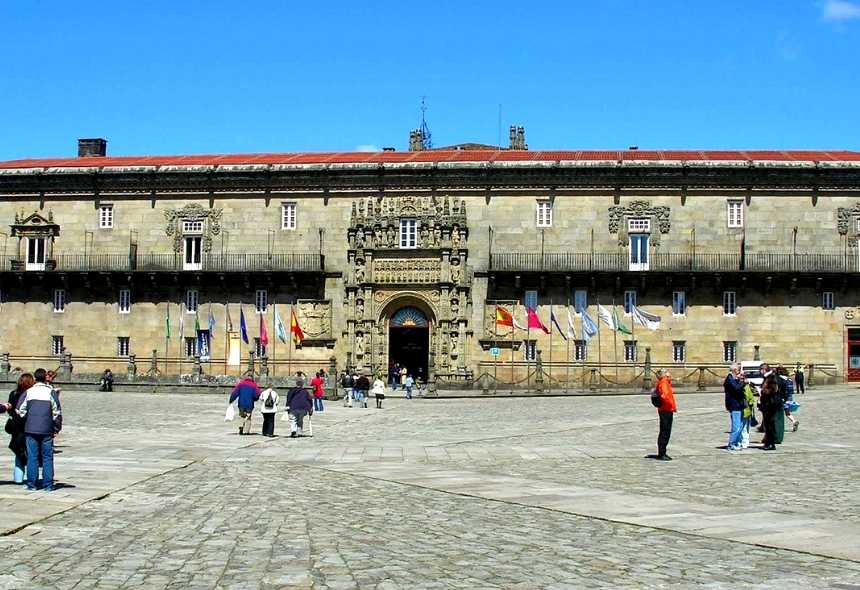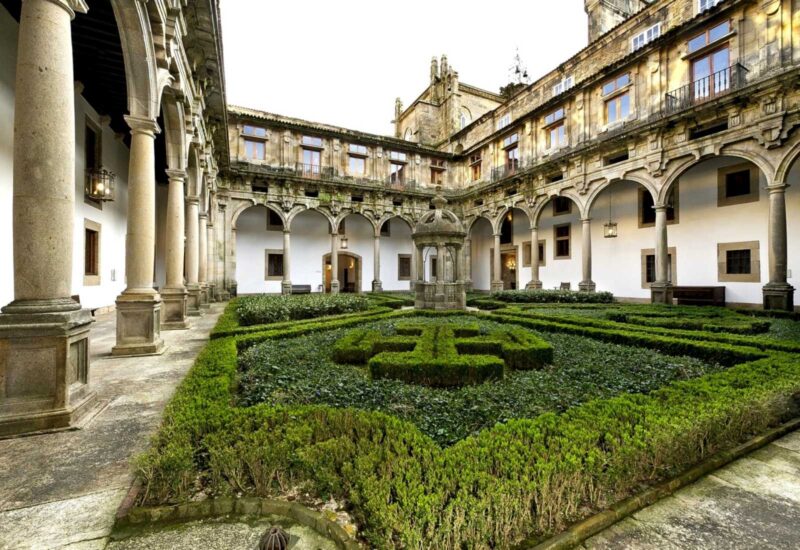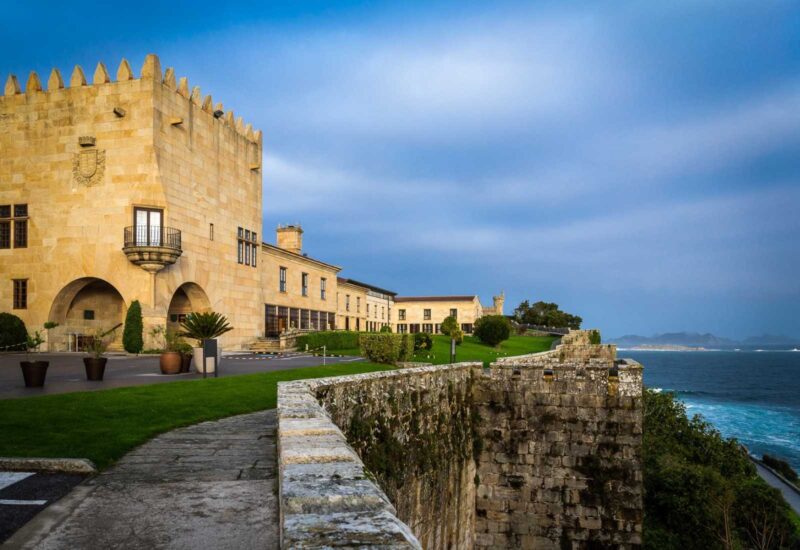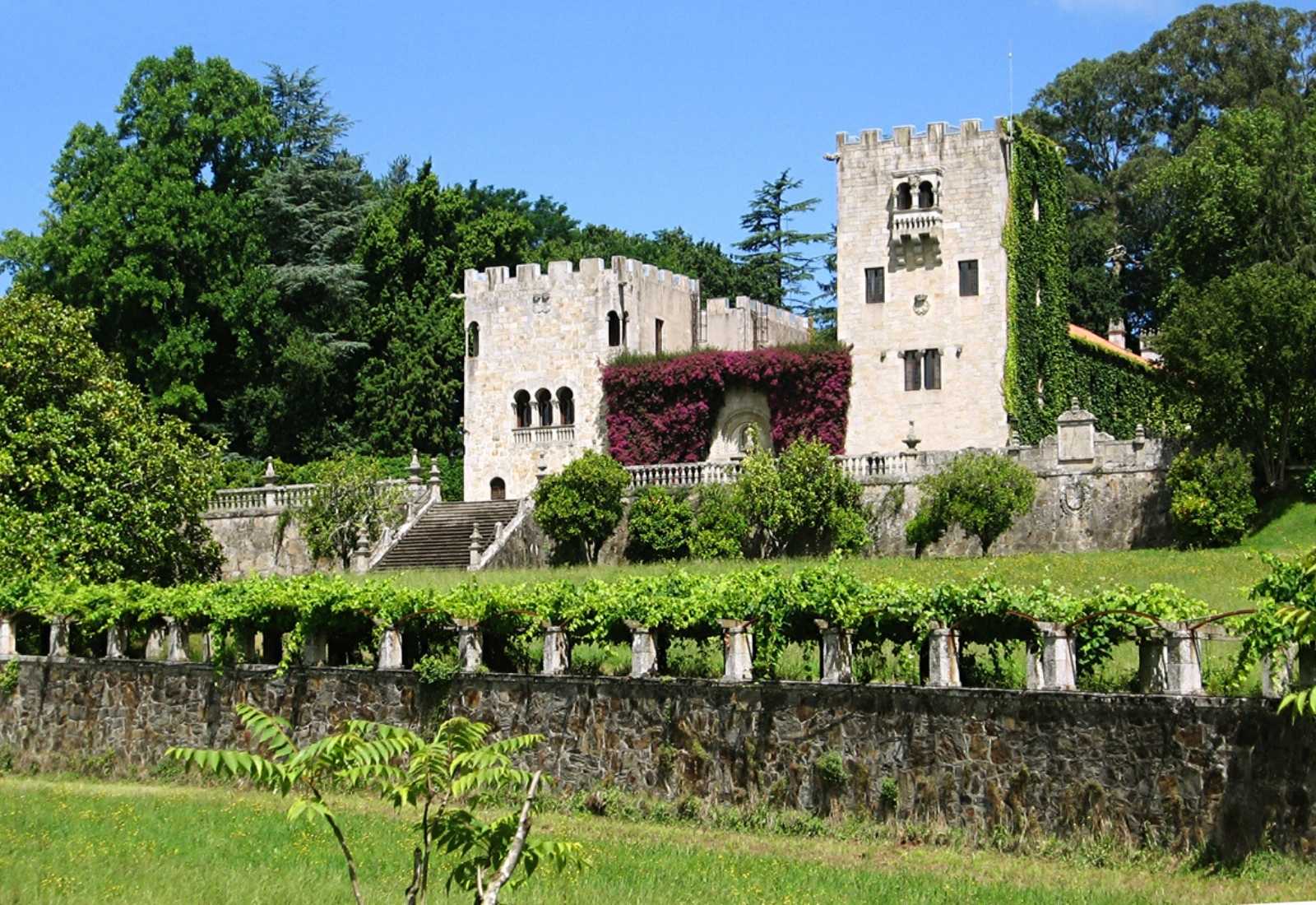In the history of civil architecture in Galicia, the initiative of the noble lord has always played an essential role. During the Middle Ages, castles were generally built to protect against wars or uprisings like that of the Irmandiños. With the arrival of the Modern Age, a more peaceful era in Spanish territory, the aristocracy began to construct their own private residences. This gave rise to the Galician pazos, which are residential mansions always surrounded by gardens and agricultural estates.
Today, many of them are still preserved, some privately owned and others publicly owned. The latter, to this day, have been converted for tourist use and transformed into Paradores. Many of them can be found along the Camino de Santiago, and if you are a pilgrim heading to Compostela, you can get to know some of them. In this article, we will take a journey through the most exciting and famous pazos and Paradores in Galicia.
Parador de Santiago de Compostela (A Coruña)
Known as the Hostal de los Reyes Católicos, this iconic building stands on the north side of the Plaza del Obradoiro in Santiago de Compostela. Belonging to the Paradores hotel network, it was built between the late 15th and early 16th centuries on the initiative of the Catholic Monarchs. Designed under the direction of the royal architect Enrique Egas, its purpose was to serve as a much-needed hospital for the pilgrims who arrived in Santiago.
Today, it is considered one of the oldest hotels in Spain, as it was converted into a Parador by the State in 1953. It features four cloisters and a multitude of courtyards, halls, impressive rooms, and balconies. Of course, inside, there is a wealth of history and unique views of the Cathedral facade. If an important visitor comes to Santiago de Compostela, we assure you they will stay here. Oh, and did you know? Every day, the first pilgrims to arrive in Santiago by any of its routes have the right to have breakfast here, following the ancient hospital tradition.
Parador de Baiona (Pontevedra)
In the municipality of Baiona, right along the Portuguese Way along the Coast, you can find this beautiful Parador with stunning views of the sea. The land it occupies was once a Roman settlement, although the construction of the current structure dates back to between the 12th and 16th centuries.
Known as the Castillo de Monterreal, its construction was motivated by its defensive position in a coastline coveted by pirates and enemies of Spain. It is important to remember Baiona’s significance in relation to maritime traffic and its connection to the colonies of America. In fact, on March 1, 1493, Martín Alonso Pinzón disembarked in Baiona with the news of the discovery of America. Since 1966, this building has belonged to the Paradores chain.
Parador de Tui (Pontevedra)
On the banks of the Miño River, facing Portugal, you’ll find this beautiful Parador where the last 100 kilometers of the Portuguese Way begin. It is a traditional Galician pazo converted into a Parador in 1968. Today, it boasts a swimming pool and a beautiful terrace with sublime views of the city of Tui and the Miño River. Additionally, if you plan to walk the Camino de Santiago with your dog, you should know that your furry friend is welcome at this accommodation.
Pazo de Oca (Pontevedra)
In the municipality of A Estrada (Pontevedra), you can find this pazo or manor house, which is classified as a Cultural Heritage Site. It is a complex consisting of a manor house, orchard, garden, and laborers’ house, with its origins dating back to the 13th century. Today, the main building we see is an 18th-century construction in a Baroque style. Its garden is one of the most important in Galicia, a true tourist attraction with ponds, streams, bridges, and even an artificial island. Perhaps this is why some call it the “Galician Versailles”. It is open to visitors, and if you are planning to explore it, don’t forget to admire the hedge trimmed in the shape of a Santiago Cross.
Pazo de Meirás (A Coruña)
You probably recognize this building, one of the pazos famous for being known as the vacation residence of the Franco family. In recent years, it has been the center of a dispute over its ownership between this family and the Spanish government. It was built in the 19th century on the initiative of the famous Galician writer and forward-thinking woman, Emilia Pardo Bazán. Inside the pazo, numerous art pieces were found, including several sculptures from the Cathedral of Santiago. Located in the municipality of Sada, it has been a Cultural Heritage Site since 2008.
Pazo de Rubianes (Pontevedra)
Located in the municipality of Vilagarcía de Arousa, in the province of Pontevedra, it was built in the 15th century and renovated three centuries later. It is one of the pazos with one of the largest and oldest vineyards in the O Salnés region, famous for its Albariño wine. Additionally, it has a historic garden, named the “Garden of International Excellence of the Camellia” in 2014, a spectacular botanical garden with various elements and landscape designs in English and French styles. Lastly, it has a winery where you can enjoy wine tastings, which you can savor if you choose to follow the Spiritual Variant of the Portuguese Way.
“Dovecote, chapel, cypress, pazo is”
So goes the saying that describes some of the elements of Galician pazos, another example of Galicia’s cultural heritage. If you embark on any of the Jacobean routes, you can experience them firsthand. Your Jacobean experience will be enriched by the sight and aroma of their gardens, as part of the charm of Galicia.
During your pilgrimage, whether in Baiona, Tui, Vilagarcía de Arousa, or upon reaching Santiago, you can feel like a true lord. Prepare to embark on your journey through these architectural gems and experience the Camino de Santiago. It will be a luxurious and enriching experience in the beautiful land of Galicia. Bon voyage!







Leave A Comment